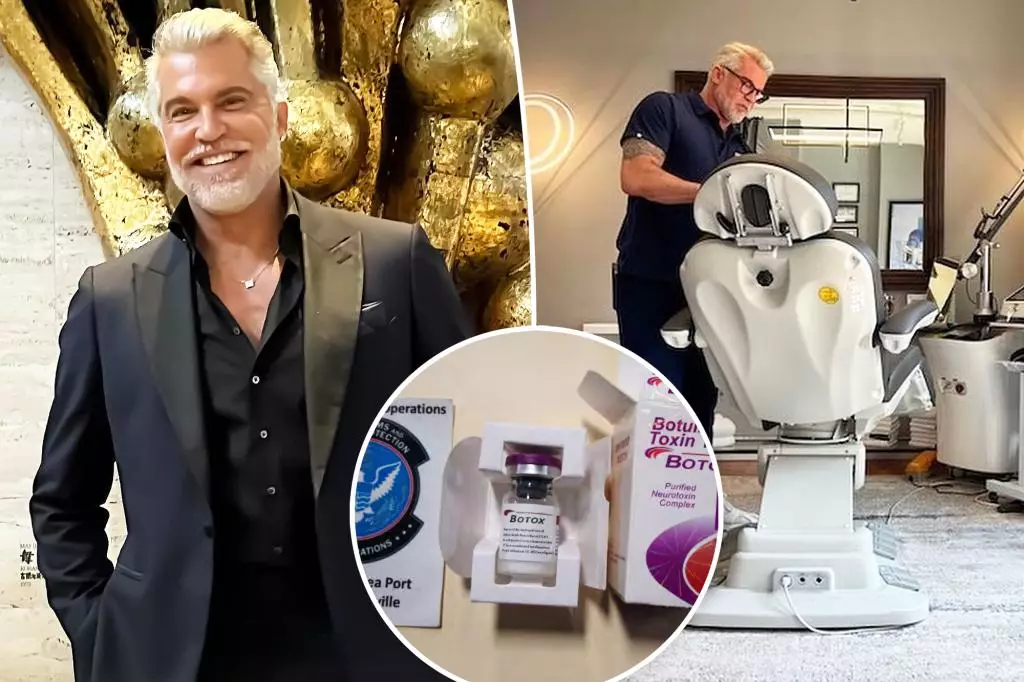The world of cosmetic enhancements has exploded in popularity, captivating individuals seeking to refine their appearances and boost self-esteem. However, along with this boom comes serious risks, particularly concerning the quality and legitimacy of treatments available. The recent case involving Joey Grant Luther, an aesthetician accused of administering counterfeit Botox, serves as a stark reminder of the potential hazards lurking in this industry.
The revelation of Luther’s alleged malpractices has sent shockwaves through the community, primarily impacting his client base, which included many individuals from the gay community. Reports indicate that many clients were unaware of Luther’s lack of proper licensing to administer Botox. Former clients recounted their experiences, highlighting troubling side effects after receiving injections, including double vision and severe heart palpitations. In one instance, a disgruntled client spent thousands seeking medical diagnosis for troubling symptoms that led to hospital visits, only to have the issue resolve on its own after considerable stress and financial burden. This betrayal shattered their trust, prompting one client to lament, “Who do you trust these days?”
Luther’s charm and relatability created a strong rapport with clients, which is often a double-edged sword. The friendly demeanor that initially attracted clients ultimately left them vulnerable. This situation illustrates how emotional investment may lead individuals to overlook critical red flags, such as a lack of proper credentials.
Another element driving this troubling trend is affordability. Luther allegedly offered Botox injections at a significantly lower price point than reputable professionals. While this drew clients seeking budget-friendly options, it also highlighted the desperate market for beauty treatments. In a society where appearance is often prioritized, individuals may rationalize their choices and take calculated risks despite the inherent dangers. The willingness to accept lower cost options can reinforce a troubling narrative that quality can emerge from corners being cut.
With accurate accusations of wire fraud and smuggling of counterfeit substances, the implications of Luther’s actions carry serious legal weight. Luther’s alleged use of non-FDA approved products raises broader questions about accountability in the aesthetics industry. The lack of regulation and enforcement leaves consumers vulnerable to exploitation from unscrupulous individuals. Consequently, this case is not merely an isolated incident but part of a larger systemic issue reflected across numerous jurisdictions.
While individuals must exercise discretion when selecting treatment options, it is incumbent upon regulators and the aesthetics industry to establish stringent oversight measures that ensure patient safety. In regions like New York, where Luther operated, authorities must fine-tune existing regulations to prevent similar happenings.
The fallout of Luther’s actions highlights the need for consumer education surrounding aesthetic procedures. Knowledge is a powerful tool; potential clients should be educated on the qualifications that practitioners must possess to perform invasive procedures safely. Understanding the difference between an aesthetician and a licensed medical professional can prove essential when navigating these murky waters.
Moreover, the repercussions of Luther’s alleged conduct extend beyond individual clients. The case has sparked conversations within the broader aesthetic community regarding how practitioners market their services and the importance of preserving integrity. Establishing a culture of ethical practice can fortify trust in the industry, ultimately benefiting professionals as much as clients.
The troubling saga of Joey Grant Luther is one of betrayal, medical negligence, and deceit woven into a tapestry of consumer vulnerability. As the lines blur between personal aesthetic goals and safety, the importance of vigilance cannot be overstated. Clients must stay informed, question credentials, and demand transparency in the pursuit of beauty. With greater awareness, the collective aim should be to foster a safer, more reputable environment where aesthetics can thrive without compromising health.

Leave a Reply